People don’t have a choice about whether or not to fight these things. You have to keep learning all you can, you have to keep finding the allies you can. And to despair is to abandon all the people who need us most.
You’re listening to Burnt Toast. This is the podcast about diet culture, fatphobia, parenting, and health. I’m Virginia Sole-Smith, and I also write the Burnt Toast newsletter.
Today is a very special episode because I am interviewing one of my very favorite people in the world: My stepmother, Mary Summers. Mary is a Senior Fellow in the Fox Leadership Program and a lecturer in political science at the University of Pennsylvania. She’s also a former physician assistant, political speechwriter, and a lifelong activist.
And 52 years ago, she and three other activists made a 28 minute black and white film about what it was like to live in a country where abortions were illegal. (Watch it and get involved!)
This was in 1970. The Roe v Wade Supreme Court decision legalizing abortion throughout the country was three years in the future. And of the approximately 800,000 abortions performed in 1970, only 1% were obtained legally. 300,000 resulted in complications and 8000 resulted in death.
We are now living in post-Roe America. There is much about this fight that has changed in the past 52 years, but also much that stays the same. So, I asked Mary to come chat with me about her work on the film as well as what we can learn from the people who fought for legal abortion before as we begin to do it again.
PS. Mary was delighted to donate her $100 podcast honorarium to the National Network of Abortion Funds. Thank you to the Burnt Toast paid subscribers who made that possible!
And big news: The Burnt Toast Giving Circle has exceeded our goal! We’ve raised $20,111 and counting for Arizona state legislature races. You can join us here, and read more about why that helps in the fight to legalize abortion here.

Episode 53 Transcript
Virginia
Let’s start by telling listeners a little bit about you and about your work.
Mary
I am a senior fellow with the Robert Fox Leadership Program at the University of Pennsylvania. I’ve been, for the last 20 years, a lecturer in political science, teaching service learning courses on the politics of food and agriculture and on schools as sites where inequalities and economic status and and health, health especially, can either be addressed or reproduced. My students, as well as being in class with me, are working in schools and after-school programs and food stamp snap enrollment campaigns and programs like that, so that they’re learning about institutions on the ground as well as in the classroom.
Virginia
And that just one of many things you have done in your life. Do you want to also just go back a little further and tell us what you did, especially around the time you made the film?
Mary
I got involved in making the film right as I was graduating from college in 1970 I was at Radcliffe. And I had gotten interested in film, and interested in the women’s movement. That period at Harvard was the height of the anti-war movement. We basically were on strike most spring semesters that I was there. Especially the Harvard strike of 1969 was really important to me, seeing the entire university mobilized around stopping ROTC on campus. People who had been meeting in tiny rooms trying to organize, by the end of that strike, were meeting in the football stadium. Faculty and students were working together, voting on the demands of the strike and passing them overwhelmingly and the administration basically conceding everything we were fighting for. That gave me a real sense that we could change the world.
In the years both prior to and after graduation, I was also getting more interested in the women’s movement as one more important way of thinking about relationships within the anti-war movement, within the student movement, and in society as a whole. Men were clearly very dominant. And women were starting to be very interested in talking to each other, about everything from clitoral orgasms to shared housekeeping in ways that were exciting and interesting. And then, a person I was taking some classes from told me about a group of women who were making a film about abortion. So I contacted them.
They originally started out of the same group of women who eventually would become the founders of Our Bodies Ourselves. It was a big Bread and Roses office that was generating all this activity around women’s health and consciousness raising groups and just lots of excitement about thinking about the inequalities of gender roles, and how could we address that. So I wrote a little grant to a program called Education for Action that that gave me funding to join this group of four women who were making this film on abortion.
It had originally been inspired, I think, by Jane Pincus, the person who made it possible to make a film because her husband was a documentary filmmaker then at MIT and we were able to use the MIT film lab equipment, and both cameras and editing. She had been listening to what was then the equivalent of NPR, about efforts to get the Massachusetts legislature to legalize abortion, and just couldn’t believe that the only voices you could hear debating it were men’s voices. So she thought, well, if we could make a film that would raise up women’s stories and voices that would make a big difference in these debates. And that made a lot of sense to me.
Virginia
Can you talk a little more about why the conversation on abortion in particular was being only had by men?
Mary
Literally, the Massachusetts legislature was all men. I mean, if there were any women in it, they, their voices were not on the radio. And really, that was a time when electoral politics was overwhelmingly dominated by white men.
Virginia
Let’s also be clear, this was three years before Roe, so abortion was illegal, which was why you were doing the film. How did you think about the potential risks you were facing by doing this work?
Mary
This was a period in which it looked as if the way we would win abortion rights was state by state, with the legislatures passing it. Hawaii had legalized abortion before we started, but that, it’s so far away.
Virginia
Right, not very helpful.
Mary
People were not going to Hawaii for abortions. Then the big question was that a lot of states were starting to legalize abortion, but you had to get permission from a doctor, meet with a psychiatrist. Abortion on demand sounded like a very, very radical idea to a lot of people. So, we were very interested in making a film that would say that should be the norm, that women should get to decide if they needed an abortion. Obviously, you can understand why people who are fighting just within state legislatures were feeling like, we aren’t going to be able to get any legalization at all, unless we allow for all these permissions and doctor involvement, “it has to be between a woman and her doctor” kind of talk.
Virginia
They were taking a kind of incremental approach.
Mary
Right. So it seemed really important to have more pressure and organizing outside the legislatures and the courts that would help push the idea that this should be women’s decisions.
Now on the question of risk—there was certainly a lot of stigma. But there was also tremendous pent up trauma that women did want a chance to talk about. I mean, that was what was so exciting about the women’s movement at that time, was all these women who had experienced a whole range of different types of very real oppression, either in their own homes or in—I mean, I went to my college infirmary and asked for birth control and they wouldn’t give it to me. The range of humiliating experiences women had been through, much less the women who had been through illegal abortions, which for many were so terrifying and so scary. There was this lovely doctor in the hills of Pennsylvania that apparently gave many women very good abortion experiences, but there were a lot of people who did not have that. So, for some of them, just being able to tell their stories was huge, even if they didn’t want their name associated with it. We started receiving tapes of women wanting to tell their stories and several of the filmmakers had stories that they taped.
So I think more we were really excited and energized about doing this work. I mean, there was a lot of debate about whether we wanted our names on the movie. So in that sense, there was worry about stigma, I would say.
Virginia
It’s so moving to think about all those women sending in those tapes. Like pre-internet, that’s a lot of work, right? You’ve have to get a tape made, put it in the mail. It’s just, it’s amazing.
Mary
That’s one of the things I remember, is trying to splice those tapes together and you know my technical skills! To create the story in the first part of the film.
I do want to emphasize that all around the country there were women who were who were becoming amazingly strong and militant around the fact that they weren’t going to put up with this anymore. We knew about the Janes in Chicago—which I think a lot of your listeners are going to know about—where women had trained themselves to do abortions on kitchen tables. To me, at least, that seemed extraordinary and, and really scary. I was like, well, thank goodness, I’m just making a film. Because that was also risking very long term prison sentences. Both, you know, could you harm somebody and could you go to prison for this. Both of those things seemed much more scary than anything we were doing.
Virginia
As you mentioned, the original goal as activists was to work towards passing abortion laws, state by state, that’s where you were when Roe happened. I would love for you to talk a little bit about how that conversation shifted. Was there a feeling that like, we really still need to do the state work? Or did it feel like okay, now that conversation is over?
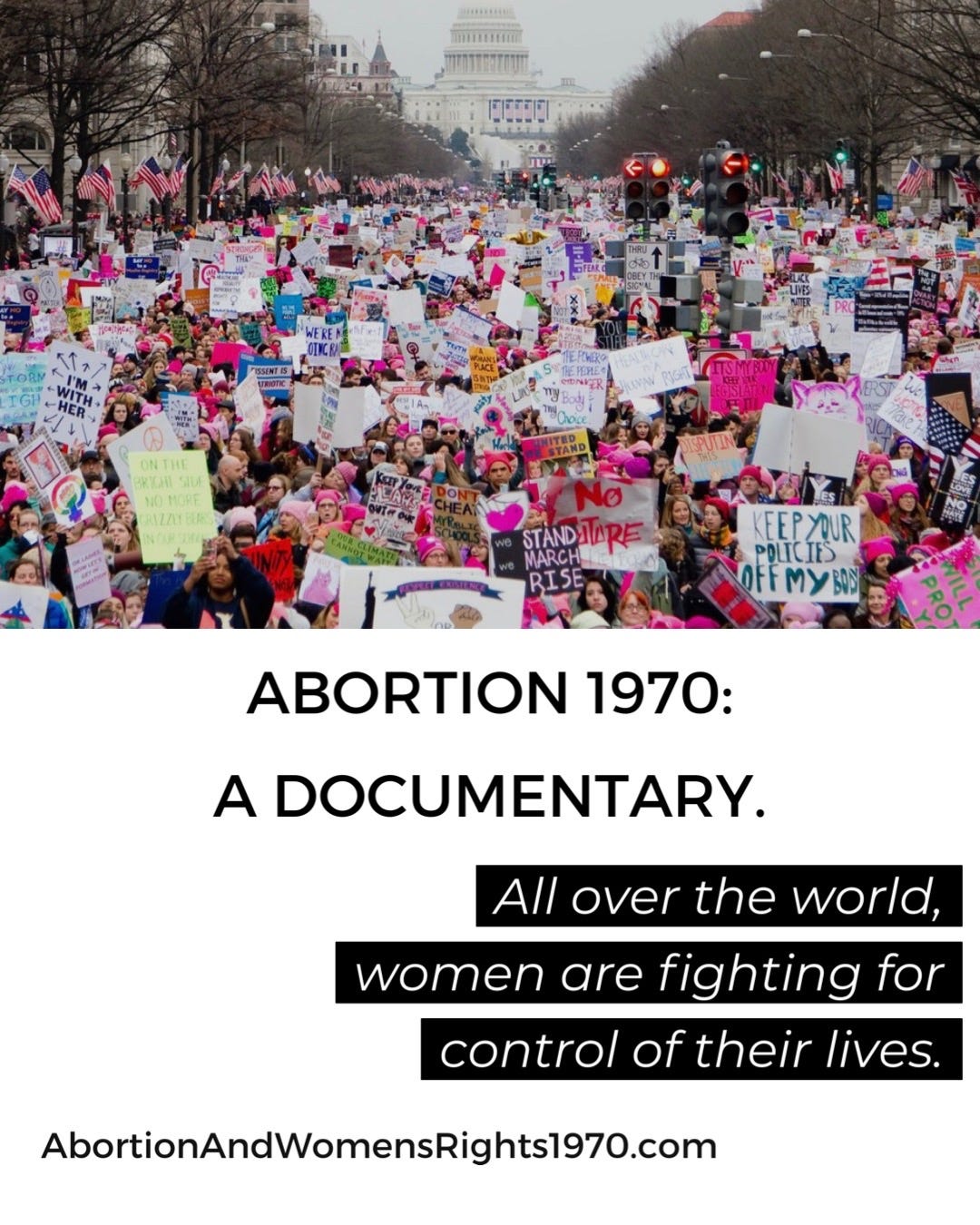
Mary
Well, a couple of things were going on. I think in terms of the bigger political picture, there was this sense of, Oh, okay. We’ve won this in the courts. That’s where we’re going to be protected. No matter what happens in the state legislature, the Supreme Court has given us this right. So, I think especially for the the people who are devoting their lives to winning abortion rights, that that just made sense.
I did think grassroots organizing and changing people’s hearts and minds, and reaching out to people with women’s stories was very, very, very important. That, to me, was the way you could make more fundamental and more lasting political change. I mean, it was incredibly important to protect women’s individual rights. But to me, we needed these bigger social and political changes that weren’t going to happen through the courts. So that was the bigger political picture.
The personal picture was: It took us almost a year longer to finish this film than we thought it would. We weren’t getting any funding. We had been this very small, intense group of women, trying to figure out how to make this film, how to tell these stories, how to guarantee that it would put abortion in a broader context in a way that we all felt proud of. Some of the major forces funding the push to win abortion rights were associated with organizations like Zero Population Growth, that had this big push on, we can solve poverty by making sure poor women don’t have children. We didn’t want our film to be used by people who had a class perspective that we thought was wrong. But it was really hard to figure out how to how to do that. So there were a lot of tensions among ourselves as we were figuring all that out. And we had to get out of the MIT Film Studio! So, we finished it quite abruptly. There were a couple of showings and we each tried to arrange other showings. My parents were in Rochester then and I went off to show it at the University of Rochester and RIT and a former professor had me come show it at Mount Holyoke.
Meanwhile, we needed to get jobs, we needed to move on with our lives. And, and it was very clear that now that abortion was legal— our film was mainly about how incredibly frightening illegal abortions were, which was not the main message that young women should be hearing. What they needed was assurance that legal abortions are safe. And so like the Guttmacher Institute, folks, for example, were kind of horrified by our film.
Virginia
Plus, the abortion pill was not an option back then.
Mary
The only thing was a D&C.
Virginia
And that does change even what a legal abortion looks like now.
Mary
In fact, legal D&Cs were not the intense, scary, painful experience that the film portrays. The broader issues that we wanted to address in the film were about the huge percentage of the people that were actually dying from illegal abortions being Black and poor women. They were also the people with the higher maternal mortality rates. Our eagerness was to address issues of inequality with regard to race and class and women’s health. Clearly all that was still very relevant. Winning abortion rights didn’t mean winning abortion access.
Virginia
Right. You see abortion as just one piece of this much larger puzzle. And at times, this has put you at odds with other feminists who’ve taken a single issue approach to this topic. So let’s talk a little bit about why it is so important to connect abortion to other issues, especially poverty, and how that helps work towards building these broader movements.
Mary
I’m somewhat reluctant to be critical, because I’m old enough now and also have studied history enough to be able to see, again and again, that what happens when you have these big broad movements trying to fight for social justice is: We never win everything we’re fighting for. And there’s a tendency afterwards to blame the people fighting for not having won it all, as opposed to blaming their opponents. One reason I want people to see the film is because I think there is this impression of “Oh, those second wave feminists, all they cared about was middle class white women,” and you can see from the film how concerned we were that that the people who were dying were Black. And how concerned we were about forced sterilization. We did not succeed in raising up those issues in ways where we won but we were raising them up.
I do think the important thing to remember is that Roe v. Wade is won in 73. And throughout the 70s, going into the 80s, we have an increasing reaction against these efforts to fight for greater equality and to use government to protect people’s rights. There’s a growing reaction against the civil rights movement, against the women’s movement, against the environmental movement. I mean, they’re achieving their greatest victories. But the reaction against them is growing and is fully articulated when Ronald Reagan gets elected and is saying, the problem is government.
The world in which you grew up is a world in which everybody was being told governments, our bureaucracy, they don’t do anybody any good. We need to work with markets to make the world a better place. That that became the mantra, which worked very well for people who had enough money. I mean, it didn’t work, it wasn’t even great for them, but it was way better for them than for people who didn’t have enough money to participate in markets. But that was the world in which people were still trying to fight for women’s equality. So the definition of equality became narrower and narrower. It was like, we need for women to get to be part of that narrow group of elites that are dominating this economy.
Virginia
It was just about accessing the white man’s power, it wasn’t redefining it.
Mary
Well, and only a very few white men’s power. Wealthy white men’s power. Very well educated and professional white men’s power. So that is happening at the same time that millions and millions and millions of white men and women and people of color, who throughout the 60s and 70s, had lived in an economy of greater equality, higher wages, jobs with benefits, pensions, funded pensions, are losing all of that.
So you can completely understand why if we’re going to live in a world dominated by wealthy elites, it should seem right that women and black people should be part of those elites. You can understand why those struggles became narrowly focused. But it also then lost you the broad base that you need to sustain a greater social movement for a vision of social justice that that speaks to more people.
Virginia
I think it’s important for folks doing this work now to understand that second wave feminists weren’t all working under the Betty Friedan model. That there was the Johnnie Tillman model (as I discussed with Angela Garbes), and this focus on what if we were dismantling this whole system of elitism as opposed to just getting a couple people promoted?
Mary
Which we thought we were doing! We won significant victories. I don’t want to lose track of that. It means a tremendous amount that we are not in the same place in this struggle that we were when I was young, much less when my mother was young. She couldn’t get a diaphragm until Massachusetts passed laws saying married couples could get birth control. So the victories we won were really significant. But the Reagan Revolution was really significant in ways that I see as resulting in the election of Donald Trump, which is why we lost abortion.
Virginia
And right now, as we’re all reeling from everything, there’s this new, divisive conversation emerging. I think there’s value to this push on using inclusive language around abortion to acknowledge that people of all genders have abortions. And then we’re hearing from folks like Pamela Paul—you and I talked about her op-ed—saying we have to keep this as a women’s issue. I think you are such a great example of someone who has been through all the different iterations of this, who has embraced inclusive language. I’d love you to talk a little bit about how you see that piece of it. What can we learn from that conversation? What do we need to be doing?
Mary
I think of social and political movements as as playing several different functions, all of which are really important. And one is, they get their strength, from the fact of people recognizing their own experience, you know, “oh my gosh, I’ve been living with this, you’ve been living with this.” We can say out loud what was terrible about this, and we can name it, we could say how horrible it was that our husbands thought they don’t even have to do the dishes, much less share the cooking. Obviously, this was going to make our husbands defensive. But it was still so important for us that we do this.
And I just think that’s always true. We need to recognize the needs of people to speak to their own experience, to name it, and to name it in ways that may make others uncomfortable.
At the same time, I just so deeply believe that most of us want the same things. We all want clean air, we all want a planet that’s not going to burn to a crisp, we want our kids to go to schools—
Virginia
And not get shot at.
Mary
Where they’re not killed and where they’re nurtured, where they learn stuff.
Virginia
Oh so, raising the bar a little higher even than not getting killed. Sure. I like how you dream big, Mary.
Mary
We want to live in safe neighborhoods. All of these are things that all of us want and right now, the politics of this country do not reflect that. Issues have been defined in ways where we just need to do a lot, a lot. Those of us who can stand to, those of us who aren’t too hurt by what we’ve been through—I don’t think any of us should be trying to force anybody who’s been through something horrendous that makes them not want to talk to anybody who sounds homophobic or sounds anti-trans. People need to be safe and to be in community. There’s so much work to be done, that no matter what your trauma, you can be doing something really useful to help others who suffered trauma like yours, right? But those of us who have led pretty protected, privileged lives—and many extraordinarily strong and amazing people who haven’t— I do think we need to be doing everything we can to be reaching out and to be listening and to not limiting our language.
We need to be able to talk to all kinds of different people who use all kinds of different language. I do think it’s important to be able to say to our trans brothers and sisters, “There are times I want to talk about women because this is so overwhelmingly a women’s experience and this is an audience I need to reach.” But to me, it’s also very liberating to go back to being able to speak very generally about people. The issues that are affecting Black lives are the same issues of health care, and housing, and jobs, and global warming, pollution. These all have more impact on Black lives than on white lives. But to address those issues, we need movements that speak to white people, too. For a long time, in the women’s movement, we sort of weren’t speaking to men at all. And that wasn’t a way to win.
Virginia
Right, that just made everything very easy to dismiss as a women’s issue. That’s why we’ve made no progress on paid leave, because it’s only women who need to take paid leave, because it’s only women who have the babies.1 We’re not going to get anywhere on a lot of this until it matters to men.
Mary
That’s why I think it’s actually quite exciting to challenge gender roles. Let’s speak to “people.”
Virginia
Right, let’s talk about how people have abortions, and people are impacted by abortion.
Mary
Yeah. And obviously, you know, there can be grammatical issues. I’m sort of against people getting too self righteous about the grammar either way. I remember a time when amazing civil rights leaders didn’t want to start saying “African American” or “Black,” who were sticking with Negro. And they had led extraordinary struggles and then started to get dissed by militant young Black leaders. Those stories happen again and again, in our movements. I do think it’s very understandable how and why it happens. The more we say, the more voices we have speaking in as many languages as possible about how most of us want the same thing, the better. Let’s make good faith efforts to get there. Let’s not attack each other. Let’s try to listen. Let’s try to understand why people are hurt and acknowledge that. And let’s follow leadership’s that’s getting us where we want to go.
Virginia
And as you said, those of us with privileged lives, who can do more work, we can do this work of learning new language. This is not the hardest thing anyone’s been asked to do! If this makes things safer and more comfortable for more people to participate, then we should be doing it.
Mary
What bothers me about the Pamela Paul piece is: No one is saying to her, don’t go out there and speak to women. She’s the one who’s choosing—
Virginia
—to feel attacked by other people’s choices. Other people’s language doesn’t actually have to impact her at all.
So, here we are post-Roe. You and I spent the week together after the decision was announced and I think I cried every day. People who know you and know your work were saying to me, “Isn’t your stepmom just devastated by what’s happening right now?” But you were one of the people giving me a lot of hope. So I would love for you to share some of that. We had a whole thread discussion here, and I was hearing from lawyers who were feeling like they had to question their careers, like, how do I keep doing this work? I was hearing from health care providers, from parents, everybody is very scared right now. And I think, pretty depressed, in my generation.
Mary
I do understand how and why people decided to rely on the courts to protect abortion and I want us to pass laws that will allow us to do that again. I see abortion rights and access as critical to life, liberty, and the pursuit of happiness. I think we have to get the majority of Americans to see that that’s the case and pass laws that will protect all of us. I understand that when it looked like you could just get those rights protected without getting people to vote for them, why people went in that direction, even though it meant giving up on building on the hearts and minds. It seemed like a safer way to go, right?
Virginia
Even though there were big trade offs to it.
Mary
The truth is that 50 years ago, we probably could have won. Before there was 50 years of anti-abortion organizing. We could have won hearts and minds more easily than we’re going to do now. 50 years of anti abortion organizing, 50 years of people’s becoming increasingly embattled and increasingly embittered by losing so much. Which has given the people that call themselves right to life their power. They seem to be the ones that are standing for principle and reaching out to others and saying, “We have principles, we value life, you know, and we may lose everything else, but we’re going to stand up for life.”
And those of us who want better lives for all people can’t allow them to be the ones in that position. I do think we need to reach out to all the presumably good hearted people who are embracing that. If they want to support women and having children, we need to say, “Okay, work with us to support healthcare for all, the Child Tax allowance…”
Virginia
Paid leave, day care…
Mary
I do think that’s one front we need to move on. We need to embrace a broader truly pro-life agenda. There’s so much work to be done to promote access, that actually people have had to be working on all these years ever since Medicaid stopped paying, much less people who don’t have access to Medicaid. People have been doing amazing work at that. They now need even more support, there’s all the work to support individual women directly. And then there’s the broader, how do we change the politics of this? And then, obviously, we’ve got to continue the court battles. We need people passionately defending freedom of speech in the states where doctors and health care providers are being told, you have to tell patients lies. Either they’re being forbidden from talking to people about abortions at all, or they’re being told they have to read scripts where abortions are associated with breast cancer and suicide.
Virginia
None of which is true.
Mary
It’s completely false science! It’s just a correlation of the fact that it’s the poor people and people of color who are an overwhelming number of the people who need abortions, and they’re also the people who face the worst health consequences on every issue. That correlation is being read as if it’s a scientific thing that has to be read to patients. Every law school in the country should be helping people think, how do we challenge this? And every medical and nursing student school should be thinking, how do we help?
I am very interested in how this is all going to play out in terms of thinking, how can we support people legally? Because we do need all these organizations that are trying to provide abortion rights and access. We can’t have them all go under. I think a lot of them do have to follow whatever the law is, and provide whatever help they can. I think a whole lot of the rest of us do need to be like the Janes in the 70s, thinking, Well, if you have to break the law in order to help women, how are we going to do it? How are we going to do it in ways that makes the law unenforceable in the ways that civil rights people did?
I mean, I think there are enormous challenges. But we have to meet them.
I have to say the one other thing that really keeps me going is thinking about history. When you think about all that Black people went through after Reconstruction. People don’t have a choice about whether or not to fight these things. You have to keep learning all you can you have to keep finding the allies you can. To despair is to abandon all the people who need us most.
Virginia
Well, now I’m going to cry again. Yes, you’re right. You’re right! It’s just, it’s hard. It’s scary. We have a lot of lives at stake and I think just sometimes I have to sit with that for a minute. But I appreciate you sketching out what these different fights are going to look like. I think it helps us all think about how we’re going to contribute.
Mary
And the sense of solidarity you can feel once you’re working with other people does support you. It’s very important not to do this work in ways that make you feel burned out or under attack in ways that you can’t handle. You have to find what works for you. And the community that can support you and the ways in which you can support yourself.
Virginia
We should say, too, there is a very robust reproductive justice movement. There are people who have been planning for this, who knew this was coming. Our work is to figure out how to support them. There was an initial response on social media, of people posting things about like, “you can come stay in my guest room if you need an abortion in my state!” And we may come to that, but there are also systems in place that we can be supporting. Individual acts of heroism going rogue is not going to be how we get this done.
Mary
And there are organizations organizing the guest rooms! People have been doing that all along because because for all these decades many women have been lacking access and then having to come to other states.
Butter For Your Burnt Toast
Virginia
Well, on the note of figuring out how to do this work without burning out, we can turn to our Butter for Burnt Toast segment where we give a recommendation. I would love to know what you were doing to take care of yourself right now?
Mary
What do I do every day, or try to do every day, it is to have breakfast on my porch, where I get the look at my garden, and read the paper. And talk to my husband, to the extent that he’s willing to have breakfast on the porch! He’s more willing on weekends, sometimes weekdays, as well. It’s a way of sharing the news, even when it’s really bad news, getting to talk about it together makes you feel more in control. And then, the way the sunlight hits the trees around my garden, that early in the morning is just so beautiful. And then I take the time to make myself a breakfast with yogurt and fruit and granola. It’s sort of the food preparation I most enjoy and enjoy eating.
Virginia
People should know that Mary is not someone who enjoys cooking dinner, certainly not on a nightly basis. All of the other conversations we’ve had about mental loads of planning meals, and all of that come directly from lived experience! But yes, breakfast preparation. I also enjoy that for myself, not for other people.
I have the same breakfast ritual, except I do it before anyone else is awake in our house so that I can just sit out on the porch and look at the flowers and the trees and rage about the news. And sometimes text Dad my Spelling Bee score, even though he’s probably already done it. It is really important to have that quiet time at the beginning of the day. It is really lovely.
Well, Mary, thank you so much. This was a really helpful conversation. I hope it helps people feel clearer on what we’re doing. And you know what this work needs to look like now, and I want to make sure people watch the film and get involved. So let’s wrap up by telling people where to find the film.
Mary
You can see the film for free at our website Abortion and Women’s Rights 1970. We really hope people will find it helpful for thinking talking and organizing around abortion rights and access. It’s 28 minutes long. It’s a good length for either a public screening or inviting some friends over to watch it and discuss it over coffee or a glass of wine. And the website’s “get involved” page provides links to organizations that they can work with or donate to, which support individuals in need of abortion care, helping people access medication abortions, as well as organizing and lobbying at local, state, national, and international levels. We would really love for that the link to that website in the film to be widely shared and posted!
Thanks so much for listening to Burnt Toast! If you’d like to support the show, please subscribe for free in your podcast player and tell a friend about this episode.
The Burnt Toast Podcast is produced and hosted by me, Virginia Sole-Smith. You can follow me on Instagram or Twitter.
Burnt Toast transcripts and essays are edited and formatted by Corinne Fay, who runs @SellTradePlus, an Instagram account where you can buy and sell plus size clothing.
The Burnt Toast logo is by Deanna Lowe.
Our theme music is by Jeff Bailey and Chris Maxwell.
Tommy Harron is our audio engineer.
Thanks for listening and for supporting independent anti-diet journalism.
Clarification: People of all genders have babies! I was articulating the way cis men have dismissed issues like paid family leave as something that only pertains to women since “only women have babies.”

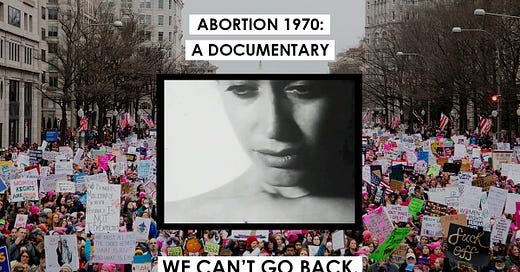
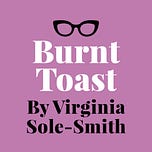

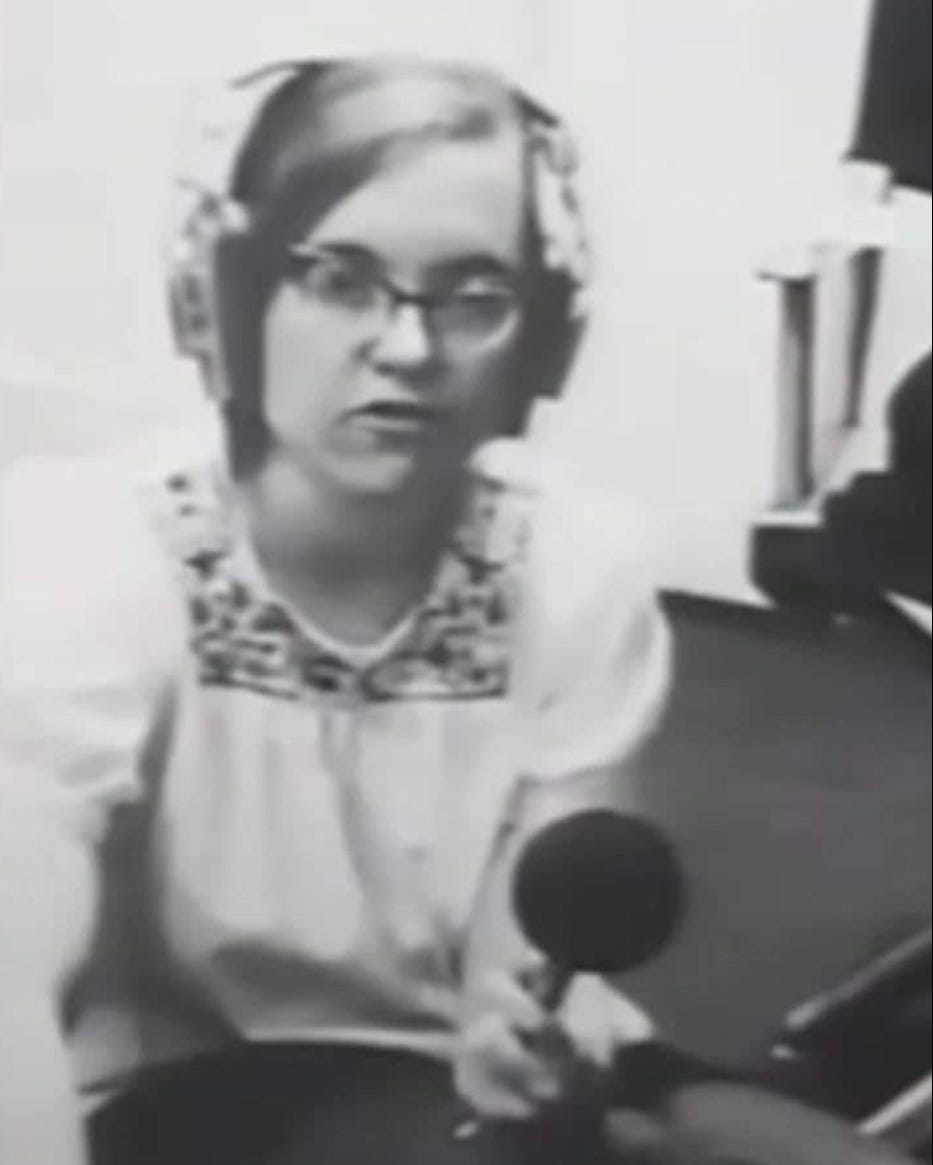
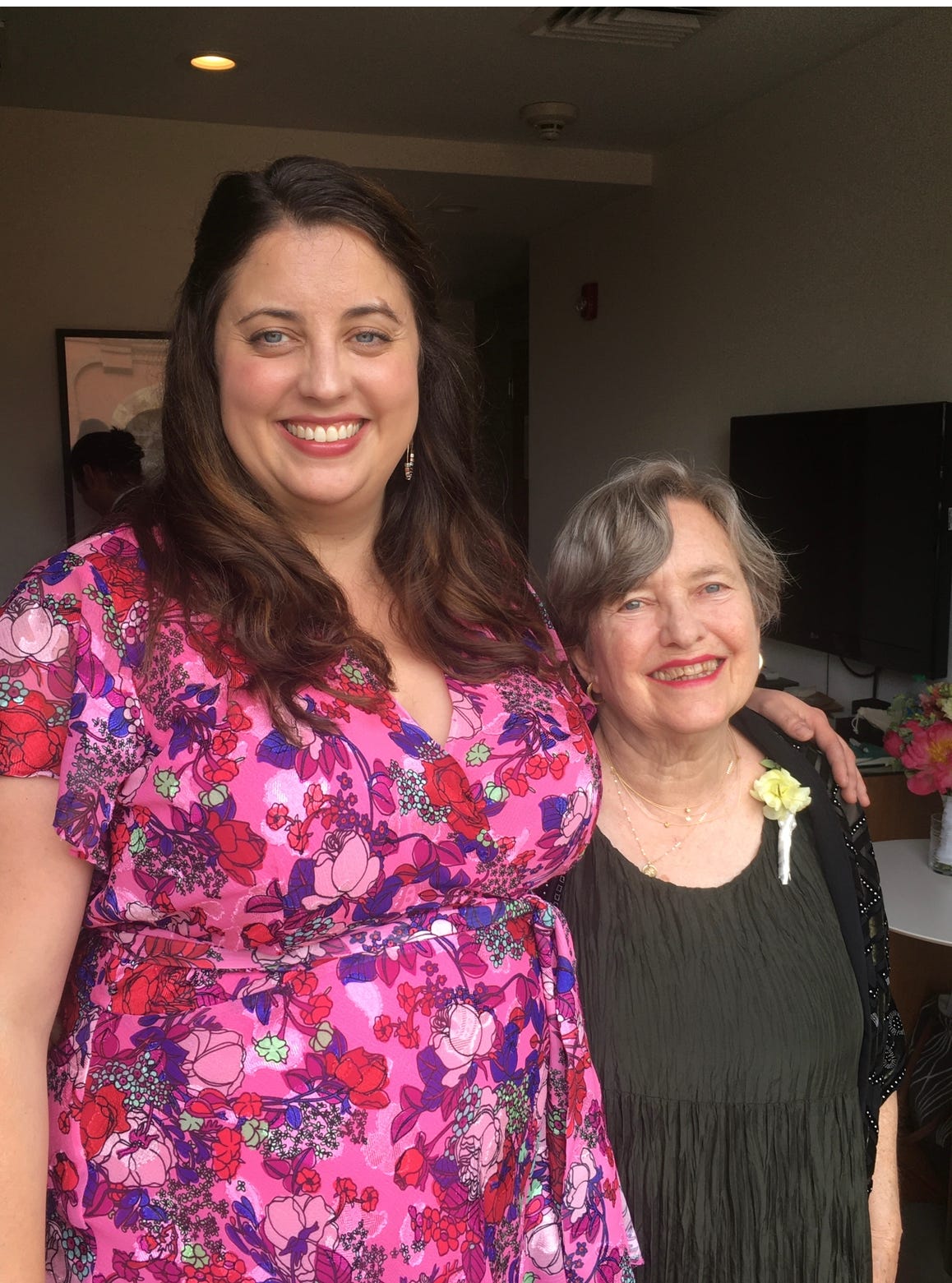

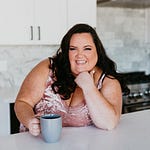
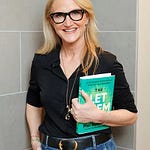
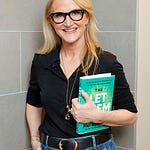
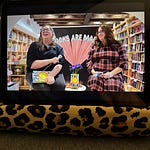
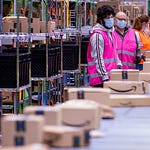
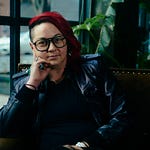


Share this post